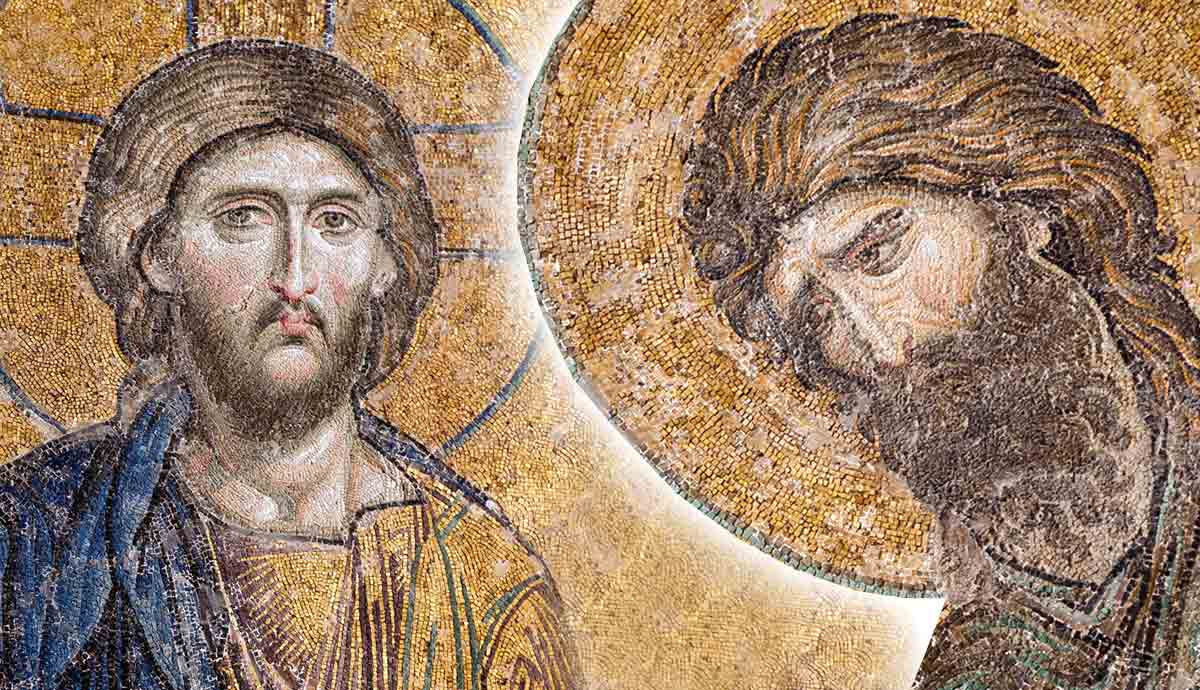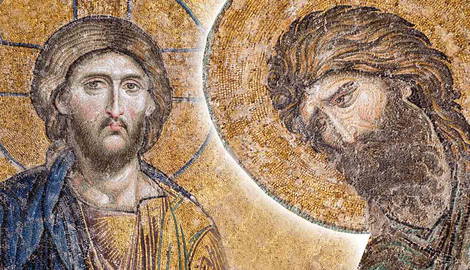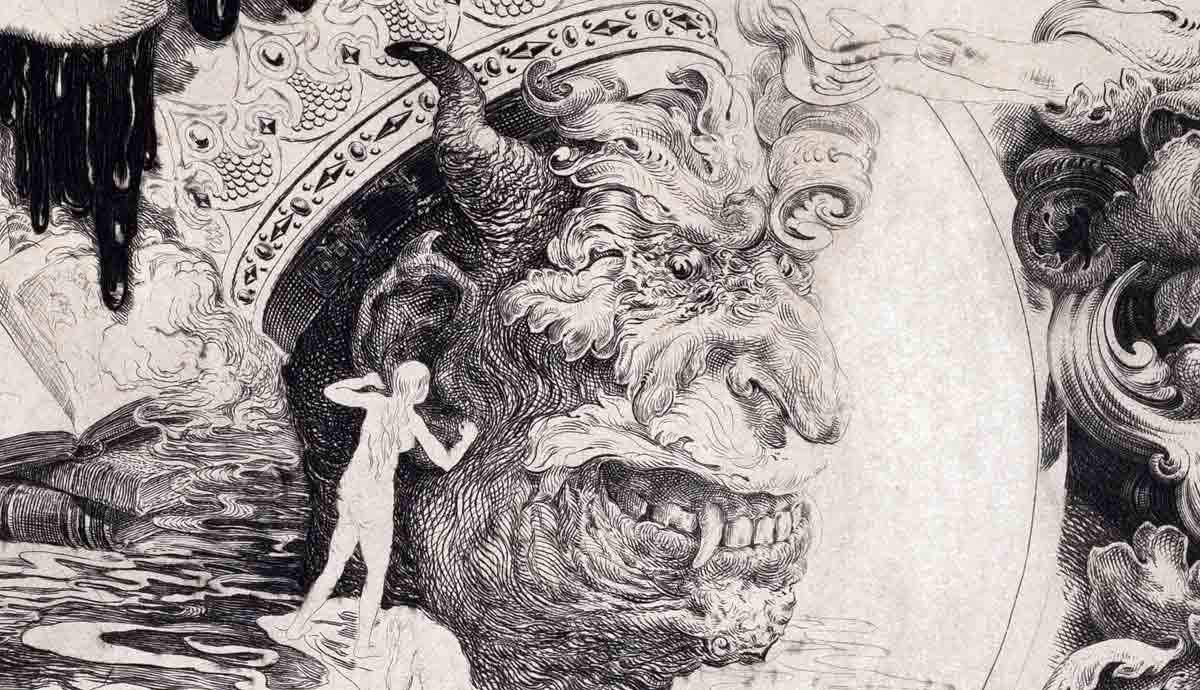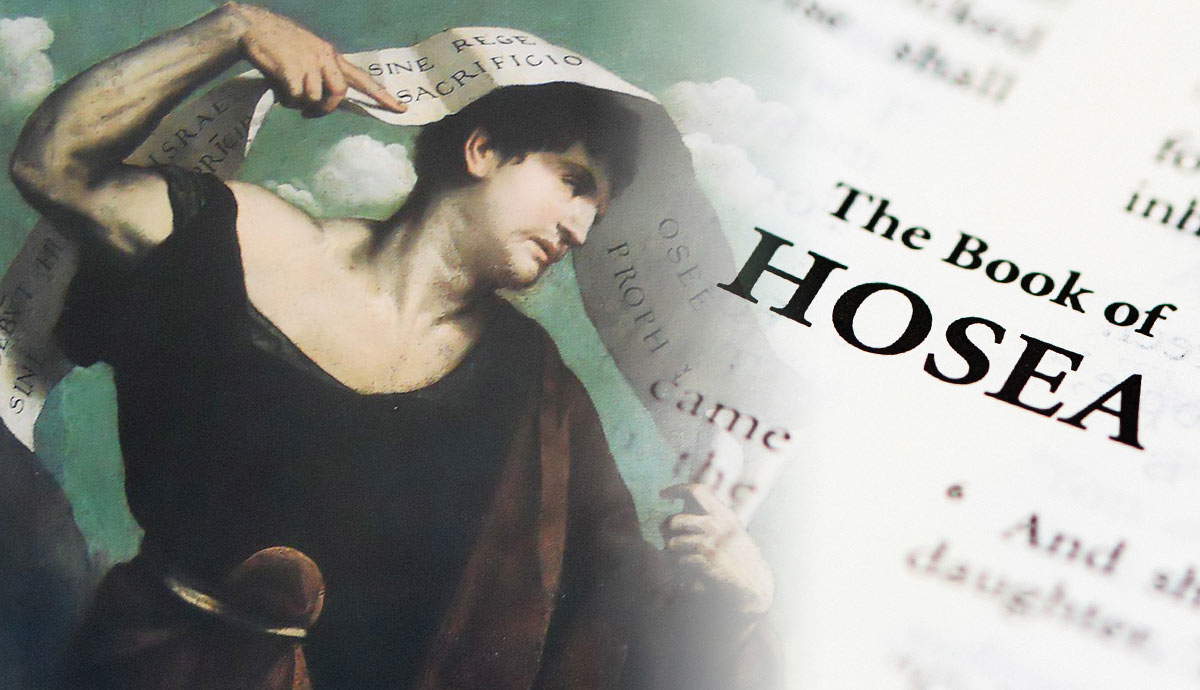
John was Jesus’s relative—perhaps a second cousin—born about six months before Jesus. With the exception of Mary, John could be considered the most important witness to Jesus’s identity as the Messiah of Israel, as recorded in the Four Gospels. His baptism of Jesus defined how he is remembered—“the Baptist” or “Baptizer.”

But according to the Gospels, John’s connection to Jesus was more profound than his role as Jesus’s baptizer or his familial relationship. John is also the primary figure connecting Jesus to the prophets of the Hebrew Bible.
Elijah, John’s Predecessor

The Hebrew Bible contains two distinct prophetic traditions, known in the Jewish reckoning as the “Former” and the “Latter Prophets.” The Former Prophets refer to the collection of books that are often referred to as the “Historical Books” in Christian circles, since they contain mostly narrative material arranged chronologically around the movements of Israel’s political leaders. The Jewish label, however, prioritizes the prophets in these stories instead.
One of the most celebrated of these is Elijah. Like other prophets, Elijah’s origins are nebulous, perhaps intentionally so, and great emphasis is placed on the supernatural powers he wielded and his strident courage in confronting corrupt royalty. But Elijah is utterly unique in one respect: he never died. Instead, he was ushered—body and soul—into God’s presence in a heavenly chariot of fire, leaving nothing but his magical cloak—and the expectation of his return—behind.
Waiting for Elijah

The story of Elijah’s stunning exit from the earthly realm seems to have invited the expectation of his return. One of the Writing Prophets, called Malachi, wrote several hundred years after Elijah’s lifetime and, importantly, after many Jews had been taken into exile by the Babylonians. He foretold the return of Elijah at a future time before a cataclysmic event would occur called the “Day of the Lord (Yahweh).” This term refers to the climax of an era in which God’s judgment would fall on evildoers and the persecuted righteous would be vindicated. Written in the first person as if God is speaking, the very last paragraph of Malachi says that Elijah will be sent to “turn the hearts of parents to their children and the hearts of children to their parents, so that I will not come and strike the land with a curse” (NRSVue).
Was John Malachi’s Elijah?

The New Testament concept of fulfilled prophecy does not necessarily involve the validation of a direct prediction. Thus, for John to serve as the fulfillment of Malachi’s prophecy about the coming of Elijah, it was enough that the two men were remarkably similar. Like Elijah, John was a man of the wilderness, foraging for food in the wild and preaching in the open air. But a more important parallel between the two is their shared purpose of calling Israel—and especially its leaders—to repentance. They are both notable for their willingness to confront authority, and for the wrath they provoked as a result.
But the two are not alike in every way. Endowed with miraculous powers, including the ability to call down heavenly fire upon his enemies, Elijah remained invincible throughout his life—even escaping death itself in the end. John, by contrast, possessed no supernatural gifts, and was eventually executed by a spiteful king.
What Was John’s Relationship to Jesus?

Similarly to Sarah in the Hebrew Bible, John’s mother Elizabeth was past child-bearing age when John was conceived. According to the Gospel of Luke, an angel predicted John’s miraculous birth to his father Zechariah, who was a priest in the Temple. Elizabeth was a relative of Mary’s, and Mary went to visit her shortly after becoming pregnant with Jesus. According to Luke’s telling, Elizabeth was the first person to recognize Jesus’s messiahship, the unborn John leaping in her womb for joy at the sound of Mary’s arrival at the door of her house. John’s role as Christ’s forerunner and announcer, thus, is portrayed as beginning before his birth in Luke.
The other Gospels omit John’s birth narrative, but all four of them speak of John’s baptism of Jesus. It is only after this event that Jesus begins his public ministry, including his performing of miracles.
What Happened During John’s Baptism?

John was a Levite, and his father was a Temple priest. This meant that he also could have held the same role. John’s practice of baptizing people in the Jordan River seems to have been unique. However, the practice of baptizing both people and objects, by way of sprinkling, was a regular duty of priests. Immersion under water as a rite of cultic purity in special ritual baths called mikvot (mikveh in the singular) had developed as a tradition within Judaism before John’s day as well. However, the devotee enters and immerses in a mikveh alone—no one officiates by standing in the water with the devotee in this case. This suggests that the image, often portrayed in popular film and art, of Jesus fully immersing into the water in front of John as they stand in the Jordan River may be less accurate than older depictions that show John pouring water over Jesus’s head.
A Martyr-Prophet?

John allegedly confronted Herod Antipas publicly for marrying his brother Philip’s wife Herodias, which was against Levitical law. In response, Herod imprisoned him. But he refrained executing John because he feared it would provoke unrest, since John was a popular reformer in Judea.
Later, however, when Herodias’s daughter dances before Herod at his birthday party, Herod promises the young woman, called Salome by Josephus, anything she might request. After consulting with her mother, she asks for John the Baptist’s head on a platter. Notwithstanding his regret for having made the offer, Herod complies out of fear of what his guests would think if he did not keep his rash vow.
The Gospels portray Herod as cowardly and crowd-pleasing, while John is resolute and convicted. In this respect, John is strikingly similar to Elijah, Elisha, Samuel, Nathan, and other prophets of ancient Israel. But, John’s martyrdom sets him apart in as the herald of Jesus, who would also be executed for political reasons.
What Role Did John the Baptist Play in Josephus’s Antiquities?

In the eighteenth chapter of his book Antiquities of the Jews, John the Baptist appears within Josephus’s discussion of the actions of Herod Antipas. Herodias and her daughter Salome are mentioned in this passage. However, Herod’s birthday party debacle as the context for John’s execution is not present. Instead, Herod finds John’s popularity itself sufficient reason to kill him. While the details of Josephus’s account with respect to Herod’s motive for executing John contradict what the Gospels claim, Herod’s overall character is remarkably similar in both sources. In the Gospels, he initially refrains from executing John out of fear; in Josephus he follows through out of fear. Josephus portrays John as a popular teacher of righteousness and Herod Antipas as an unpopular leader.
Because the works of Josephus were preserved and passed down by Roman Christian scholars, interpolations from the Gospels are possible. This has led some to doubt the authenticity of Josephus’s statements about John.
Was John an Essene?

There are distinct parallels between the values of the Essene community, the group that preserved the so-called Dead Sea Scrolls, and John’s message as it is portrayed in the Gospels. Also, John’s simple, wilderness lifestyle echoes that of the Essenes, who also lived in simple communities, often as celibates, in the Judean Desert. However, whether or not John belonged to this group is not clear. There were also variations between groups of the Essene sect. Thus, it is appropriate to associate John with a wider trend within the Judaism of his day of people who were seeking radical reform. Their priorities and methods would have differed, but they shared some general concerns and grievances as well as hopes. All of them based these hopes in Jewish scriptural tradition.
Between Eras

John, perhaps more than any figure in the New Testament, bridges what might be seen as a gap between the Jesus movement and the prophetic tradition in the biblical stories. His identification with Elijah specifically is made at several points in the Gospels. But he also represents continuity with an older era of prophets generally, while simultaneously inaugurating what he and those he inspired saw as a radical shift in that prophetic mission.










